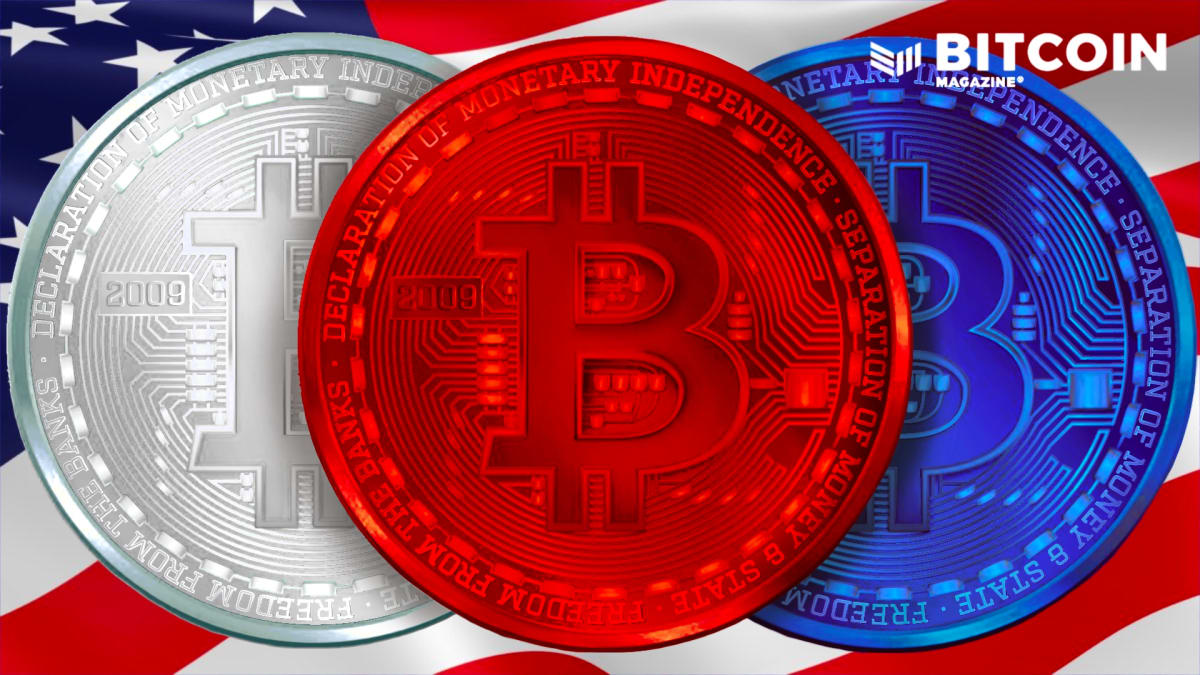Watch The Episode On YouTube
Listen To This Episode Here:
- Apple
- Spotify
- Libsyn
- Rumble
- Overcast
In this episode of the “Fed Watch” podcast, CK and I had the privilege to chat with Matthew Pines from the Bitcoin Policy Institute. He recently wrote the fantastic and comprehensive Bitcoin essay for policymakers and the general public, “Bitcoin and US National Security: An Assessment of Bitcoin as a Strategic Opportunity for the United States.” Our conversation was a summary of the essay, digging deeper into quality vs quantity adoption, stablecoins, and ways that nations view Central Bank Digital Currencies (CBDCs) differently. It ends with talking about the Federal Reserve (Fed) and their predicament right now over rate hikes with an inverted yield curve.
“Fed Watch” is a podcast for people interested in central bank current events and how Bitcoin will integrate or replace aspects of the traditional financial system. To understand how bitcoin will become global money, we must first understand what’s happening now.
Report Summary
We started out by discussing who was Pines’ target audience and how that affected the structure of the paper. I was curious because the paper is very comprehensive, covering Bitcoin’s technical mechanics, recent monetary history and the ways bitcoin could be used to the strategic advantage of the United States.
Pines responded that he anchored the structure of the paper around Biden’s recent executive order. As people are taking a closer look at these topics and as they are writing reports themselves in response to that order, Pines wanted to give them an analytical primer and a summary of how Bitcoin can address the specific concerns of the administration about national security.
Bitcoin Adoption
Next, we get into some specifics from the report. He mentions that 16% of U.S. adults own bitcoin and other cryptocurrencies. However, this is an overall figure and doesn’t speak to the quality of that adoption. For instance, it could be gamblers buying tokens on Coinbase. I wondered if he had insight on adoption by the politically powerful, i.e., business leaders, government officials, influencers, millionaires and billionaires. In essence, I asked Pines to speculate based on his unique knowledge set.
Pines has a great line when he says, “The power of selective high-value orange-pilling can’t be overstated.” He says that it’s kind of what we all want, but it can turn out badly. He also warns against concentrating too much on politicians. In other words, let Bitcoin’s incentives do the work.
Staying on the policy front for one more question, we ask if adoption is closing the window for potentially devastating policy decisions. If 16% of the public own bitcoin now, how much will that be in one or two years? If 50% of people own bitcoin and even more people within the politically influential class own bitcoin, does that make it nearly impossible to get bad policy? Once again, I’m asking him to speculate on this question.
Pines’ answer is very constructive. He points out that the window of policy is moving in a positive direction, citing Senator Lummis’ recent work. He makes the distinction between the legislative and executive branches and says each has a different relationship to policy. The lawmakers are oblivious, but an average employee of the executive branch could perpetuate misunderstanding because they are in a rush to write a brief or complete a report.
Stablecoins And Europe
Now we get into the CBDC discussion, focusing on Europe first. Pines claims that the European Union is inherently threatened by USD stablecoins and bitcoin, because it is the monetary union that underpins the political union. Therefore, the EU is naturally drawn to CBDC solutions.
Pines also agrees that the Fed differs from the European Central Bank in terms of its pursuit of a CBDC. Basically, the Fed has a great grasp on the issues and forces at play in a CBDC. They are already much more friendly to USD stablecoins than a CBDC, even though they might not know all the strategic advantages that Pines has outlined in his report.
One of Pines’ great points from his report is the ability for the Fed to regulate USD stablecoins and force them to be buyers of U.S. Treasury securities. This could add more demand for Treasuries and even give the Fed a new policy tool.
The Fed Is Trapped
In the last part of the interview, we have time to quickly cover the Fed’s predicament. They have made a massive move to hawkishness, and after only one tiny hike, the yield curve is already inverting, signaling recession. I asked Pines what he thought of this development and what his take on the Fed’s options are at this point.
Pines goes on to expertly describe the situation in which the Fed finds itself as an “irreducibly complex system.” The Fed has to poke this complex system increasingly harder each time and wait to see what breaks. Pines says if we want to see where we are headed, we should look to Japan because they are five to 10 years ahead of the rest of the world in monetary experiments like quantitative easing and yield curve control.







































